Dear Artist,
A few minutes ago I was watching a young couple staring at a huge abstract painting in a commercial art gallery. The painting was mysterious, dark, tentative — with perhaps, only perhaps, the whisper of a female figure. Previously, when I’d daringly checked out its very high price, a gallerista swept by and assured me, “We sell a lot of this man’s work.”
Now I’m sitting on a bench eating coconut ice cream while keeping abreast of brain science on my iPad. V.S. Ramachandran is a professor of neuroscience and psychology at the University of California, San Diego. Looking into various brains, including the brains of people who look at art, he’s come to the conclusion that things are better when they are less visible. He calls it “The Peekaboo Principle.” In his research, it seems that girls in scanty clothing are more appealing to the average straight male than girls in the buff. To be fair, these findings have been challenged by every frat house west of the Pecos.
According to Ramachandran, concealment works because we are hardwired to solve puzzles. People get turned on by problem solving. Further, curiosity is more arousing than the part where you get the message. This is how Ramachandran explains the popularity of abstract art. It seems our tiny perfect brains are forever on the lookout for wizardry. He thinks we are hardwired for what he calls “ultranormal stimuli.”
Yep, it’s a bit like religion — many people crave the possibilities of the transcendent, the divine, the paranormal. We have all thought about the mystery of why people desire such and such and not such and such. Some in the neuroscience business would have us all marching as zombies to the primordial echoes of our lizard or other cranial departments. Perhaps that’s why it feels good once in a while to hear someone say they liked a painting of a barn because it’s their barn. The young couple in the gallery moved over to the desk. They happened to be maxed out on their card, but the gallery was just willing to take a cheque. “I don’t know why we both love it,” the young woman said. “But we’re definitely taking it.”
Best regards, Robert
PS: “Perception is more like puzzle-solving than most people realize.” (V. S. Ramachandran, The Tell-Tale Brain: A Neuroscientist’s Quest for What Makes Us Human)
Esoterica: Many artists tell me they are totally not interested in what makes people buy their art. Some are even not interested in why they make art in the first place. These people are known as “link challenged.” I’m not one of them. Why did I choose the coconut over the Hawaiian Mud Pie? A lot of people were buying the HMP. For me, it was those little bits of coconut. They’re hidden in there. Those little bits are not fully disclosed at the beginning. You have to find them as you go along. Oops, a drip.
This letter was originally published as “The peekaboo principle” on February 11, 2011.
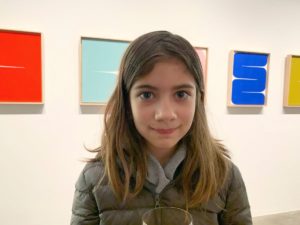
Many thanks to those of you who came to Thursday’s opening at Gallery Jones — including this gallery-goer — my artist niece, Poppy.
The group exhibition “The Intercepting Nature of Colour + Form” is one view at Gallery Jones, 1-258 East 1st Avenue, Vancouver, BC until February 22, 2020.
The Letters: Vol. 1 and 2, narrated by Dave Genn, are available for download on Amazon, here. Proceeds of sales contribute to the production of The Painter’s Keys.
“The universe is real but you can’t see it. You have to imagine it. Once you imagine it, you can be realistic about reproducing it.” (Alexander Calder)
Featured Workshop
Join Canadian artist Sheree Jones as she shares her passion for painting “from life” at this idyllic coastal retreat.
This workshop is designed for experienced beginner & intermediate oil (and acrylic) painters.
The small group size guarantees plenty of one on one instruction.
While you’re busy creating art, your friendly hosts at Casa Buena will be working hard, ensuring that your stay is a memorable one.
Outstanding food, accommodations, and field trips will satisfy your desire for both comfort and adventure. Non painting partners welcome.
For more information visit:
http://www.casabuenaartretreat.com/retreatSheree.htm
or contact Sheree:
sheree@shereejones.com
Featured Artist
Capturing the beauty of nature and expressing those impressions in oil paint is a joy. Every hour of the day presents new possibilities and keeps even the same landscape location, same composition, an ongoing and beckoning challenge. For this reason, I love painting series: it is exploration made visual.

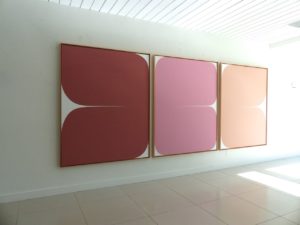
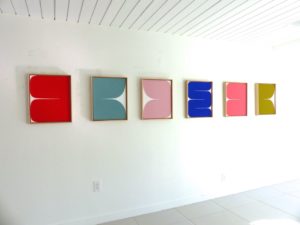

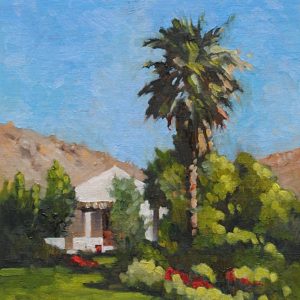
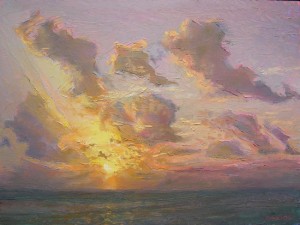



16 Comments
Ramachandran is right, of course, and this is why a sense of the numinous, the mysterious, in art is the seasoning that distinguishes the best. Thanks for re-sharing Sara.
It’s obvious that without YOU, the universe would cease to exist….YOU ARE the center of the universe. Create whatever gives YOU pleasure….benign of course….and the universe will respond accordingly. How utterly magnificent! Life is BIG!
A painting featuring a trail or road leading into the distance is a part of that mystery we humans relish. Where will it lead to? What place and why is the road or path there? One only has to see the works of Andrew Wyeth to see the same principle of mystery that makes a painting appealing . As for abstract art I think the appeal is different. Humans are masters of patterns. We like to examine, and analyze patterns, whether for recreation, daily activities or simply because that’s what we do.
Excellent !
I love this concise essay in appealing contrasts – especially the ice-cream coda !
Fascinating article on the “lure” of abstract art! For some of us who find abstract art perplexing, would that be because our minds are not naturally curious or problem solvers? Makes one wonder.
Very interesting! I find this applies to representational art as well. Please don’t give me every last detail in a scene. Those ah ha moments are more fun & impressive.
Your work is mesmerizing, Sara, as are these newsletters. Thanks for sharing your paintings along with your father’s words this time.
I have a quote on the wall of my studio by Lee Mullican: “The most important element of art is mystery.”
I love your paintings Sara. They’re like a little pop of goodness that soothes in this chaotic world.
i cant see anything in the paintings
the same of nothing.
Clearly these are graphic images of the female form sitting on a sofa or chair. I see this all the time on mine, a rough suede like surface which unintentionally records an imprint. Although now that I see the blue piece… I’m not so sure….
I read this today and then visited an art gallery that was having an exhibit of the work of fourteen women. Their approach and media varied a great deal. One artist had an abstract geometric style that I usually don’t like but I remembered the ideas in this article about “Peekaboo Principle” and a puzzle to solve. For the first time, I felt more interest in the art and did appreciate it more. It’s always great to find a key to open up your understanding.
The problem solving monkey in me, is engaged by certain kinds of abstract art.
Other kinds of abstract art pleases me, because it can just “be” without my trying to figure it out.
Either way, I love abstract art, because it is not rigidly defined, and represents a kind of freedom that makes me want to join in on it’s journey.
This made me realize something about my own art, that I call Abstract Photography.
It involves photographs of recognizable things, that are altered in such a way, as to make them hard/impossible to recognize.
The Peekaboo effect.
Subject matter is chosen for its compositional strength, then the colors are altered in such a way, as to remove the distraction of recognizing the original object.
And yet part of your brain tries to figure it out.
So it engages you, draws your attention, and keeps you looking at it.
My favorite article of Roberts’ so far. Thank you. Intriguing
Appreciate this article so much! Thank you Robert (Rest-in-Art) and Sara. Best of luck with your intriguing show.